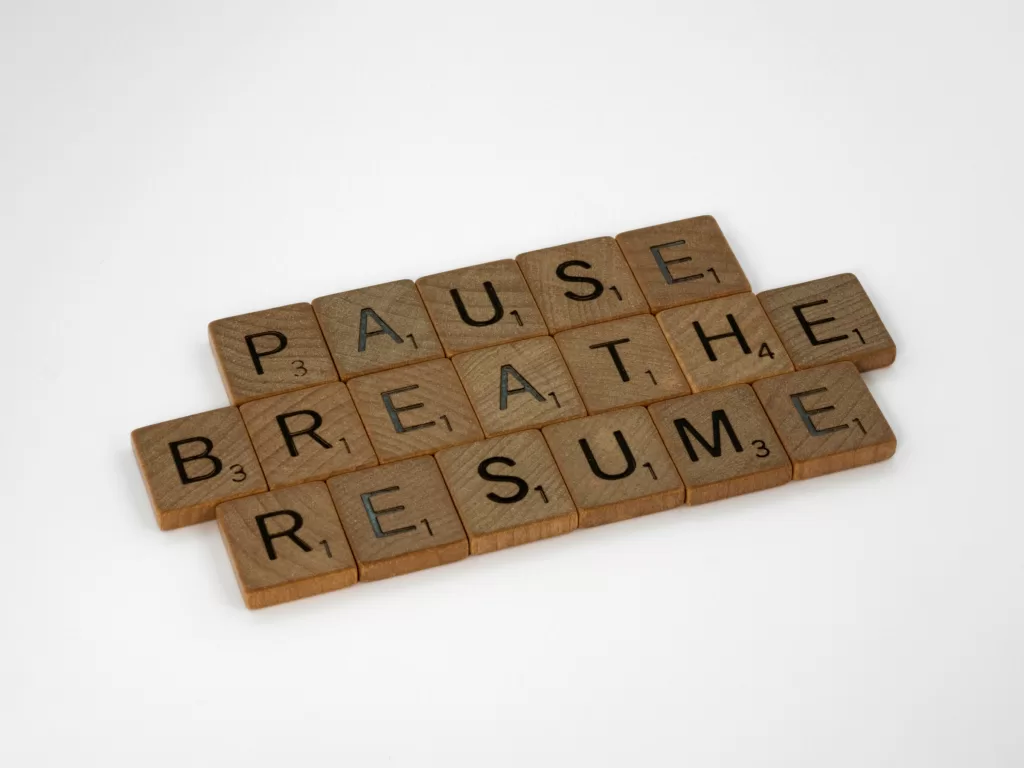7 Ways to Update Your Resume to Land More Interviews and Get a Job More Quickly
On average, recruiters look at a resume for less than seven seconds. That’s how much time you have to make an impression. Wild, but true.
And even though that amount of time sounds ruthless, it makes much more sense once you see the massive stack of applications that come in for an average position. I’ve worked in companies that routinely received 200+ applications for each open role.
If you’ve recently been searching for a job, I’m guessing you’ve noticed the jaw-dropping (and depressing) number of applications listed for some positions on LinkedIn. That application tally is a good indicator of how intense a job search can be.
After more than a decade as a manager and HR leader, I’ve read countless resumes and participated in 100+ interviews. I’ve also had the chance to help many friends and colleagues with their resumes and job searches.
Here are the biggest lessons I’ve learned to make your resume stand out:
1. Remember that recruiters want to minimize risk
One quick logistical note because it’s important to understand…
Each company’s interview process looks a bit different, but for many companies, you can loosely think of the process in five-ish stages:
- Application Phase: The recruiter or an automated system called an Applicant Tracking System (ATS) scans through the applications and resumes. Most people don’t make it out of this stage.
- Phone Screen: The recruiter has a brief phone call (often 15–30 minutes) with the candidates who cleared Stage I.
- Interview #1: Candidates who make it through Stage II earn a longer interview with someone else — often the Hiring Manager for the role (your future boss), future colleagues, or other company leaders.
- Interview #2: Same as above. Most companies have at least two interviews, but some have more (potentially even a half-dozen).
- Job Offer: Whoever stands out in the interviews earns a job offer. There are often other aspects of this stage, including negotiating salary, reference and/or background checks, etc.
Note: Some companies include other steps like requesting a work sample.
As described above, a recruiter often runs Stages I and II. And their job isn’t only to surface the best candidates — it’s to filter out the worst ones.
But because it’s often hard to tell who would be worst in a role, many recruiters use riskiest as a proxy for worst. That means the recruiter’s first pass through the application stack is usually an effort to weed out any risky candidates.
Now, put yourself in their shoes: If you were a recruiter, you wouldn’t want to pass through a candidate that could make your boss or a hiring manager question your judgment or think you weren’t vetting candidates appropriately. So from that perspective:
Risky candidate on paper = Risky for the recruiter’s job
For this reason, a lot of “safe” candidates make it through the first stage of weeding out applications: Ivy League grads, candidates who’ve done that same job for 5–10 years, ex-Google and ex-Microsoft people, etc. Those people may or may not do a good job in the role, but they’re definitely safe for the recruiter, so they often make it through to the phone interview.
A recruiter’s risk aversion means that you need to do anything possible to de-risk your resume and application, which leads to this next tip.
2. Connect the dots for the recruiter
The best way to de-risk yourself is to show the recruiter you’ve done something similar to this specific job before. Show them you’re someone whom they’ll look smart for passing along to the next stage.
Think of your job as trying to solve a problem for the recruiter. They have a position they need to fill, and they need qualified candidates to fill it. They want someone who can solve that problem.
One of the biggest mistakes I see people make on resumes is to list jobs they held previously without connecting those jobs back to the role they’re applying for.
You need to connect the dots for the recruiter. Show them how your last job relates to this new job.
This is easy to do when your last role was the same as this new one (e.g., you were a Product Manager and you’re applying to be a Product Manager). It’s tougher when your last role was only somewhat related.
For example, let’s say you’ve been a Customer Success Manager (CSM) for three years but you want to move into product management (PM), so you apply for a PM role. If you just list the normal tasks you did as a CSM, you won’t get anywhere.
Your resume will scream “RISKY,” and you’ll be tossed into the dump bin. Your only chance is to connect the dots:
- Explain that your customer service experience helped you build great relationships with clients — the same type of relationships that a PM needs to build with clients.
- If you once partnered with the PM team to integrate your largest client’s feedback into the newest version of your company software, include a bullet point for that.
- If you previously coordinated a cross-department project to gather client quotes and testimonials, mention that too.
Rack your brain to think of any and every time you’ve done a PM-related task or project in your CSM role. Show the recruiter that this is a tiny baby step from your last role — not a giant leap into new territory.
3. Use standard job titles
Another mistake I see people make all the time is to include weird job titles in their resume.
It’s been trendy in tech companies recently to create unique job titles like “Recruitment Rockstar,” “Tech Guru,” or “Sales Rainmaker” to make roles sound more sexy or interesting. That’s fine within the four walls of your company (where people understand what that role is), but it’s not going to resonate with recruiters from other firms.
A recruiter’s job is hard enough. Imagine trying to evaluate someone’s entire career by looking at a single sheet of paper for a few seconds. Now imagine that paper has goofy shit like “Tech Guru” on it. As a recruiter, can you see why that would make your job harder?
You wouldn’t know whether that abstract person on the other end of the resume had been working in IT, software development, product management, or something else. And you darn sure wouldn’t feel confident they’d be a great fit for the open job you’re trying to fill.
This is why it’s important to use standard job titles in your resume. Take out the guesswork for the recruiter.
When I’ve coached friends and acquaintances to do this, some have wondered, “But wait…is it lying to say a different job title?” Great question. And no, it’s not as long as you represent your role fairly and accurately.
If you were a Customer Success Manager (CSM) and you put down that you were a Product Manager, that is 100% NOT okay. But if your company called your position “Customer Happiness Representative” (or some other trendy title) and you were actually a CSM, then list the standard title of CSM which every recruiter will understand.
The point of doing this is to remove guesswork (which is good) — not to falsify a job title (which is bad).
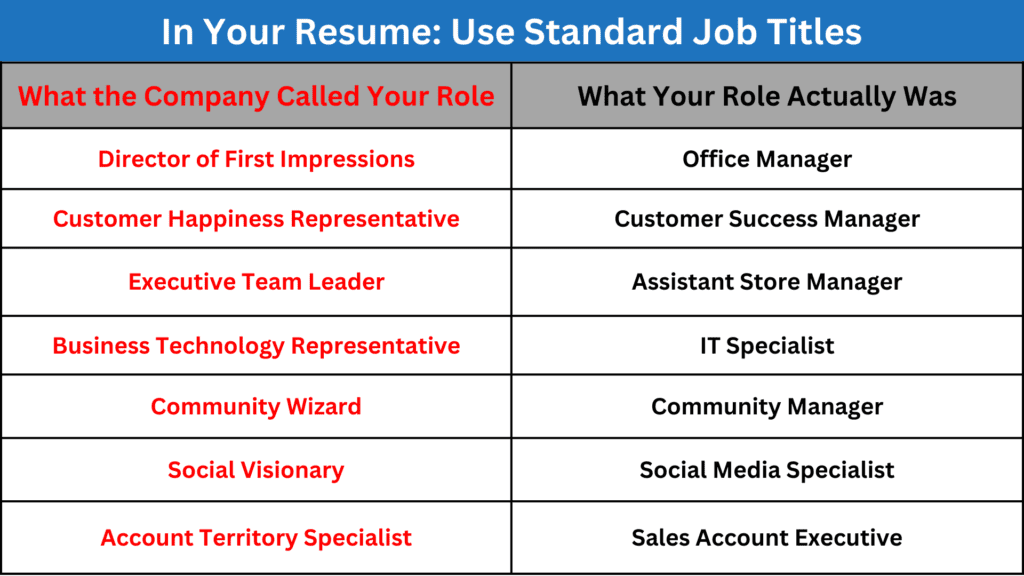
4. Show, don’t tell
The number one mistake job searchers make on resumes is TELLING what they can do rather than SHOWING what they’ve accomplished.
Just like a good novelist, you need to show — not tell.
Get rid of subjective statements like “proven problem-solver,” “hard-working sales rep,” or “energetic people-person.” Those statements are meaningless. I’ve read hundreds of resumes, and everyone says those things about themselves — regardless of whether they exhibit those traits.
For this reason, I’m not a huge fan of listing “skills” on your resume, like this resume example below:
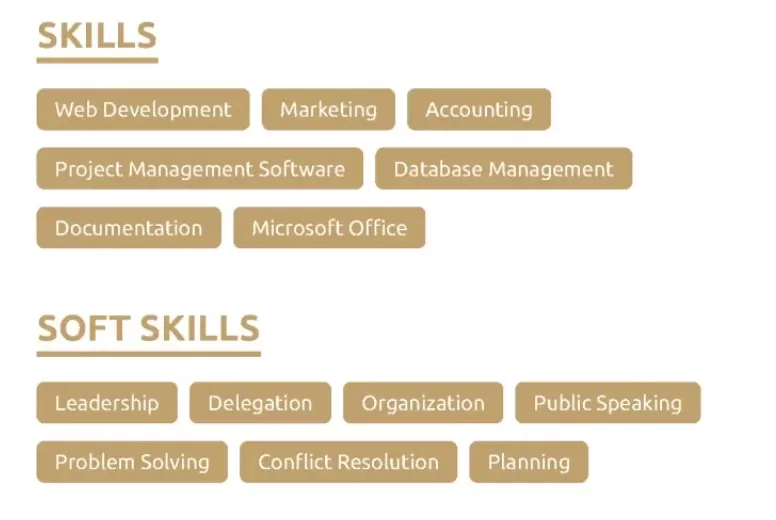
That type of list means nothing. Anyone can say they’re a strong leader or an organized person.
Instead, show what you did by sharing concrete facts of what you accomplished in each role, similar to the examples on the right below:
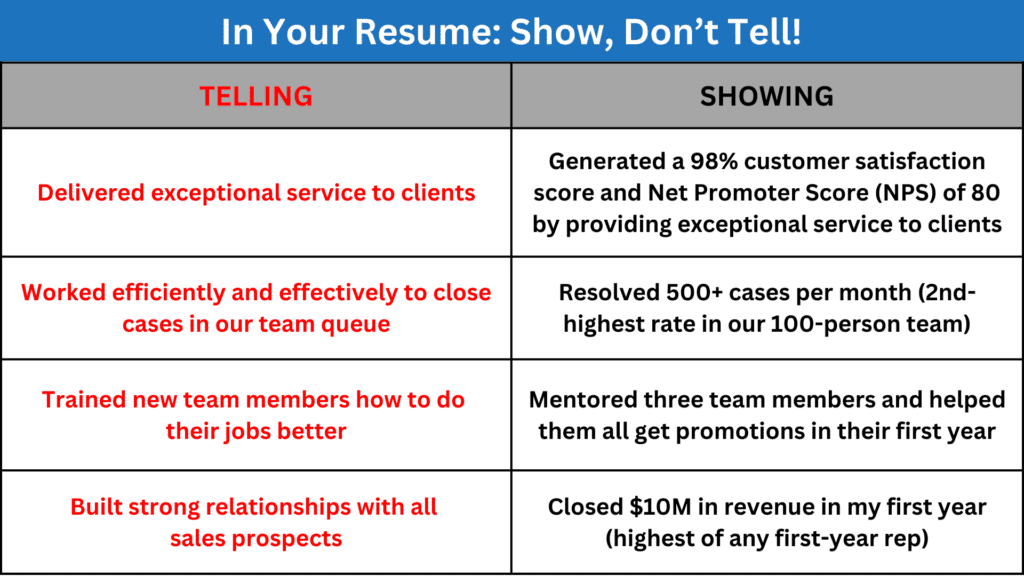
5. Add metrics to show the results you achieved
Similar to what’s depicted in the image above, you need to identify precise metrics you achieved in each of your past roles. This is arguably the most impactful thing you can do to improve your resume, but it’s also probably the most difficult.
Every person I’ve ever helped with their resume thinks that one or two of their previous roles would be impossible to convey with objective metrics. But thankfully, every one of those people has been wrong. After spending 10–30 minutes discussing their roles, we’ve been able to find quantitative metrics they can use to demonstrate success.
Again, this process is not easy, but it’s extremely important.
Let’s look at two example roles:
- Guest Service Representative at a retail store (a “blue-collar job”)
- Financial Analyst at a tech company (a “white-collar job”).
If you’ve been working as a Guest Service Rep at a retail store like Walmart or Target, it can be tempting to think there’s nothing quantitative you’ve achieved in your role. For that reason, many people resort to just TELLING what they did in their role: stocked shelves, sorted products, tagged inventory, etc. But as we’ve already discussed, those descriptions don’t help land you a job. Recruiters want to see tangible results.
Here are a few example metrics you may have achieved that you’ve potentially forgotten about:
- Helped my store earn a 95% customer satisfaction rating by providing fast, friendly, and efficient service to all clients
- Scored the 3rd-fastest average checkout lane time in my store by quickly ringing guests up at the checkout lanes
- Showed up to every shift on time with zero callouts and zero compliance violations
I’ve also heard knowledge workers like Financial Analysts bemoan that they can’t think of any metrics to include on their resume. Some white-collar jobs are easy to quantify (like sales because everything is quota-driven), but others are a bit more tricky.
But after chatting with these individuals, they often remember that they’ve achieved multiple goals like the ones below:
- Generated over 100 financial reports each quarter for the company’s executive team and board of directors
- Cut the company’s standard month-end close time in half by writing several Python scripts and Excel macros that saved 8 hours every month
- Closed 1,000 cases in the team finance queue (the highest figure on the team) by working efficiently and effectively every day
Regardless of which prior jobs you’ve had, there’s a 99 percent chance you can pull something quantitative out of them. And those metrics will help you demonstrate you’re someone worth hiring.
6. Showcase your distinctive advantage
Every candidate has something that makes them unique, but you often have to self-reflect to unearth that uniqueness.
One acquaintance of mine had been applying to jobs for months but hadn’t received many interviews. This person (we’ll call her “Tina”) wondered if her resume was to blame.
After we walked through Tina’s resume and I asked her a few questions, I realized she had buried her hidden superpower at the bottom of her resume. Tina had lived and worked in multiple countries and spoke four languages, but that information was only a footnote on her resume.
She was applying for trainer positions in international companies, and all of those businesses would have loved to have a multi-lingual, multi-cultural person in that role. But it would take a recruiter way too long to figure out Tina’s superpower, so many of them had been sliding her application into their “no” pile.
So Tina moved her distinctive advantage way up in her resume and mentioned it in the very first paragraph to ensure every recruiter would see it right away.
As a personal example, two of my differentiators are that I’ve led teams as large as 160 people and I’ve built onboarding and training programs from scratch at multiple companies, so I’ve called out those distinctive advantages at the top of my resume:

In the words of Meryl Streep, “What makes you different or weird, that’s your strength.” Don’t bury your uniqueness at the bottom of your resume. Shout it out at the top.
7. If you took a career break, explain why
Covid-19 seems to have caused two favorable changes in the way recruiters view resumes:
- Many recruiters are now more understanding of layoffs because so many companies have done them recently.
- Recruiters are also much more accustomed to seeing career breaks (time away from work) for things like medical leave, caring for a sick loved one, wanting to spend more time with family, etc.
If you have gaps in your resume, these two winds of change are quite favorable for you.
But you also don’t want the recruiter to have to guess why you left a company or what you’ve been doing with your free time. For that reason, I’d recommend calling out exactly why you left your last firm and/or explaining what you’ve been doing in your time away from work.
For example, here’s the note I included in my resume after I was laid off from my prior employer:
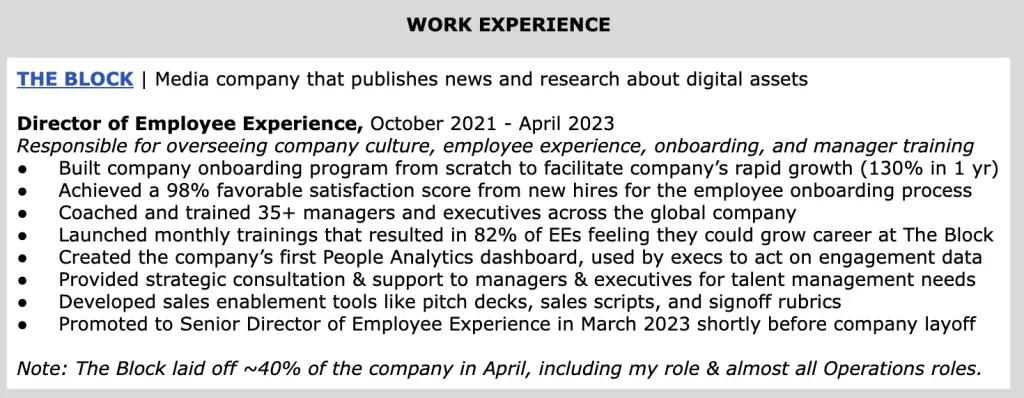
Depending on your situation, you may want to call out why you left your last job: laid off, changed career direction, took a career break, etc.
And if you’ve taken a long career break, consider listing that your job for the past year has been “stay-at-home parent,” “new mom/dad,” or “world traveler.” Don’t make the recruiter guess. Own it.
Note: Resumes are inherently subjective. You’ll receive different recommendations from different people, so take all of my advice with a grain of salt and determine what is best for your situation. I think you’ll find the greatest alignment on the first six tips I shared, while this seventh tip is probably the most subjective one of the bunch.
Resumes are tricky business. I know because I’ve been in your shoes. And I’ve also had to comb through stacks of applications to find the gems that are worthy of garnering a phone screen or interview.
These seven tips will give you a good chance of standing out from the herd:
- Remember that recruiters want to minimize risk
- Connect the dots for the recruiter
- Use standard job titles
- Show, don’t tell
- Add metrics to show the results you achieved
- Showcase your distinctive advantage
- If you took a career break, explain why
Best of luck in your job search, and feel free to ask any follow-up questions in the comments. I’ll respond to every question.
Want to become a stronger leader?
Sign up to get my exclusive
10-page guide for leaders and learners.
